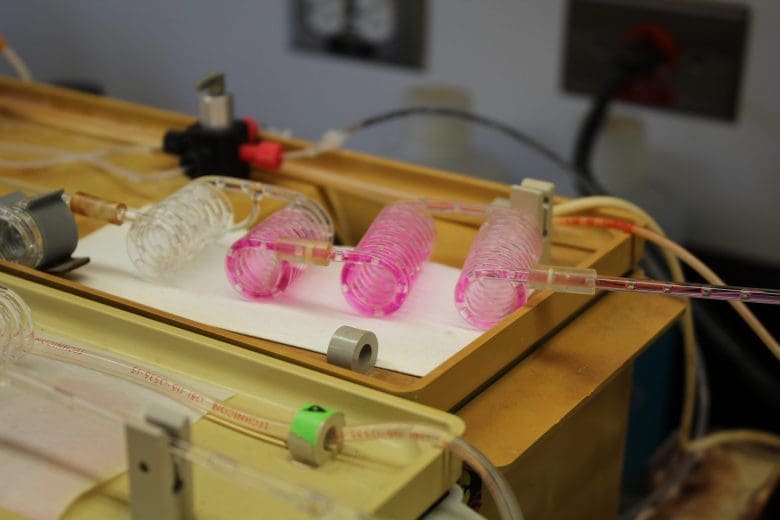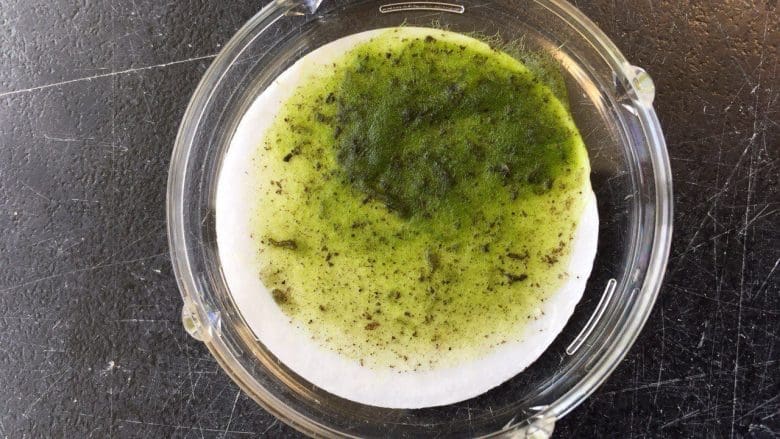News August 28, 2017
Four Crucial Things That Happen in the IISD-ELA Chemistry Lab
By Hannah Polaczek, Environmental Science student at the University of Manitoba
When you think of IISD Experimental Lakes Area, what comes to mind? Beautiful forest-edged lakes in Canada’s Boreal Forest? Researchers hard at work out on the lakes collecting fish and water samples? Nights spent sitting around a camp fire after a hard day’s work out on the lakes?
All of these images and more are true, but let’s not forget that once the water has been collected, it needs to be analyzed—often within a short time period. This is because in order to understand changes to the lake water occurring as a result of our manipulations, it needs to be chemically analyzed. Is the pH changing? Is there less oxygen in the water? What is happening to the phosphorus and nitrogen? All of this happens behind the scenes in our chemistry laboratory.
Hannah Polaczek, an Environmental Science student at the University of Manitoba, who has been working in our chemistry laboratory this summer, takes us right into the heart of the action, and reveals four things that happen in the chemistry laboratory each week!

- First up, our researchers head out onto the lakes and collect samples of water from various bodies of water throughout IISD-ELA. Water samples are taken from long-term reference lakes (or “control” lakes), experimental lakes (lakes that are currently being experimented on), and streams are brought to the chemistry laboratory (or “chem lab”) by the Lake Sampling/Hydrology crew. The crew goes out to make these collections three times a week. In addition, chemistry students sometimes head out to what we call “chem island” on Lake 240 to collect a precipitation sample from a rainfall collection pan that has been set up there. When the samples arrive in the chem lab, the very first step is bringing them to the filtering station. This is where samples collected in the field get aliquoted (filtered, bottled, and labeled) in preparation for the analyses they are about to undergo. Samples are aliquoted in such a way to ensure chemical stability of the particular element in question for a given analysis, thus maximizing the accuracy and precision of the data obtained from the analysis. For example, the portion of an integrated epilimnion sample (a sample that is representative of the upper layer of water of a stratified lake) collected in the field which will be analyzed for dissolved inorganic carbon (DIC) is poured into a small Nalgene container with a conical cap at the filtering station to ensure that no air is able to interact with the water before the sample is analyzed.

- What kind of analyses do we perform at the chem lab at IISD-ELA? There are many different types carried out depending on what we are currently researching. For example, we can test for alkalinity, DIC, pH, phytoplankton, suspended phosphorus, chlorophyll and more. Depending on the lake, some parameters may be of particular interest over others to those who are researching it. This is the case with the fertilization experiment that has taken place in Lake 227 for the past 46 years. Water samples collected from this lake have higher levels of chlorophyll, phosphorus, and nitrogen, and so we are particularly interested in testing for those.

- Although we try and do as much of the chemical analysis of our lakes’ water samples on-site, some of them will still need to be sent elsewhere for further testing. Of the 17 analyses performed, 12 are conducted on-site, while the remaining five are shipped elsewhere. Like some of the other analyses performed off-site, suspended C/N samples which are used to test for carbon and nitrogen in the water column cannot be analyzed on-site because we don’t have the instruments to do so. These samples are therefore sent to the Biogeochemical Analytical Service Lab at the University of Alberta to be analyzed with an elemental analyzer.

IISD Experimental Lakes Area’s chemistry laboratory looked a little different back in 1974.
- Time is of the essence when it comes to analyzing our lake samples. Certain analyses, such as pH, conductivity, and DIC must be completed within 24 hours of the sample collection time. Other analyses, such as nutrients, silica and chlorophyll, have to be completed within one week or one year, respectively, of the sample collection date. The reason there are different time windows for analyzing certain samples is because some parameters we test for are more likely than others to change over time. For example, chlorophyll filters are put in the desiccator to dry them out, then frozen and kept in the dark to prevent degradation until we have time to analyze them. We all therefore have to have excellent time management skills to work in the chem lab!
And when we are not analyzing the data, there are always plenty of dishes to be washed and data to be entered to keep us busy!